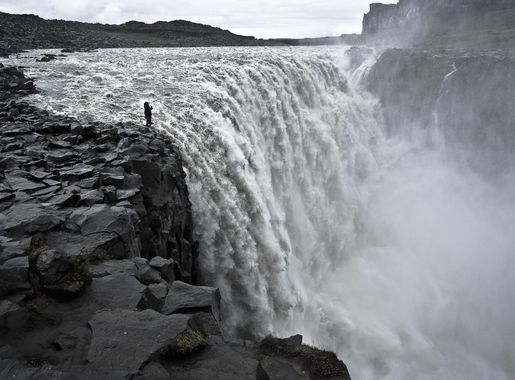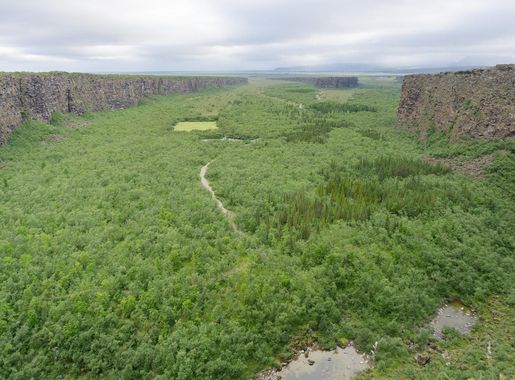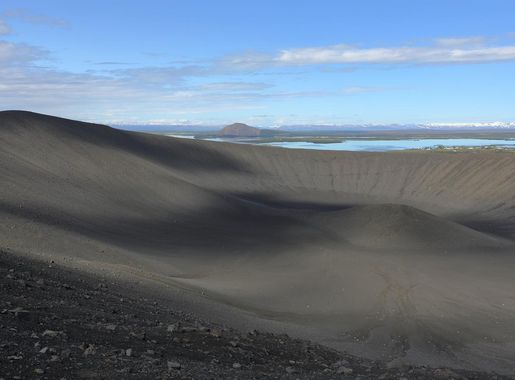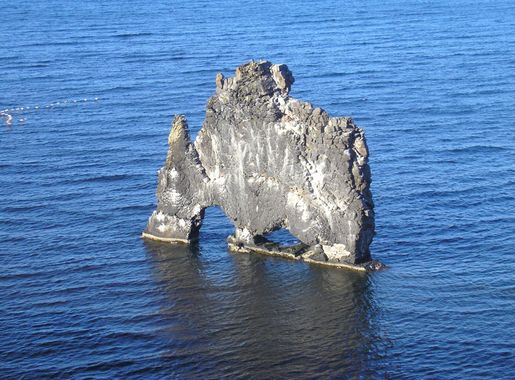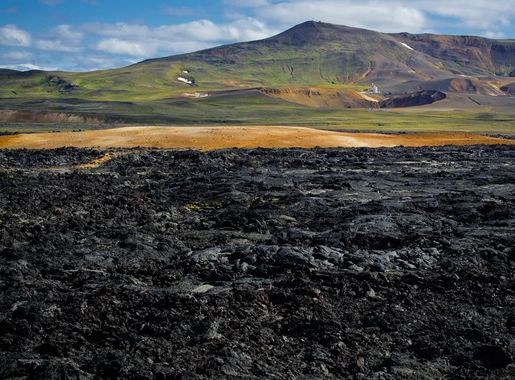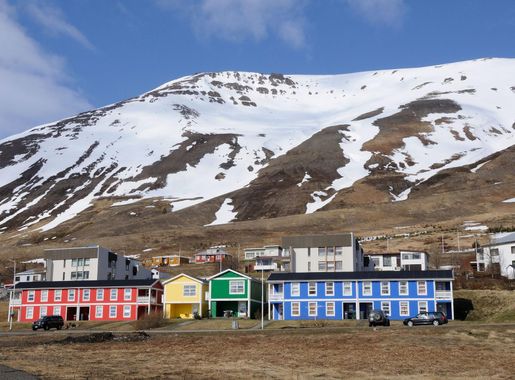
The Enchanting Wonders of North Iceland
Discover North Iceland: A land of geothermal wonders, stunning waterfalls, and rich wildlife, offering a tranquil and authentic Icelandic experience.
North Iceland is a land of striking contrasts and natural beauty. Nestled between the Arctic Circle and the rest of Iceland, it offers a myriad of landscapes from volcanic craters and geothermal hot springs to lush green valleys and majestic waterfalls. The region is less traveled compared to the south, giving you a chance to explore its wonders with a sense of tranquility and solitude. One of the highlights of North Iceland is the Lake Mývatn area, known for its rich birdlife, unique lava formations, and the soothing Mývatn Nature Baths. A visit to the nearby Dimmuborgir lava fields, with their eerie rock formations, is a must for any adventurer. Not far from here, you’ll find the powerful Dettifoss waterfall, one of the most spectacular natural sights in Iceland. For those interested in Icelandic culture and history, the town of Akureyri, often called the 'Capital of the North,' offers charming streets, vibrant arts, and a stunning botanical garden. The town is also a gateway to the Arctic Circle and offers a variety of winter activities, including skiing and snowboarding. Whale watching tours from Húsavík, known as the whale watching capital of Europe, provide an unforgettable experience as you witness these majestic creatures in their natural habitat.
Local tips in North Iceland
- Pack layers and waterproof clothing, as the weather can change rapidly.
- Rent a car to explore the remote and scenic spots at your own pace.
- Visit the Mývatn Nature Baths in the evening for a relaxing soak under the stars.
- Take a whale watching tour from Húsavík for a chance to see humpback and minke whales.
- Don't miss the Dettifoss waterfall, especially during the thaw season when it’s at its most powerful.
- Summer is the best time for bird watching around Lake Mývatn.
The Enchanting Wonders of North Iceland
North Iceland is a land of striking contrasts and natural beauty. Nestled between the Arctic Circle and the rest of Iceland, it offers a myriad of landscapes from volcanic craters and geothermal hot springs to lush green valleys and majestic waterfalls. The region is less traveled compared to the south, giving you a chance to explore its wonders with a sense of tranquility and solitude. One of the highlights of North Iceland is the Lake Mývatn area, known for its rich birdlife, unique lava formations, and the soothing Mývatn Nature Baths. A visit to the nearby Dimmuborgir lava fields, with their eerie rock formations, is a must for any adventurer. Not far from here, you’ll find the powerful Dettifoss waterfall, one of the most spectacular natural sights in Iceland. For those interested in Icelandic culture and history, the town of Akureyri, often called the 'Capital of the North,' offers charming streets, vibrant arts, and a stunning botanical garden. The town is also a gateway to the Arctic Circle and offers a variety of winter activities, including skiing and snowboarding. Whale watching tours from Húsavík, known as the whale watching capital of Europe, provide an unforgettable experience as you witness these majestic creatures in their natural habitat.
When is the best time to go to North Iceland?
Iconic landmarks you can’t miss
Hallgrimskirkja
Experience the majestic Hallgrimskirkja, Reykjavik's iconic church offering breathtaking views and a glimpse into Iceland's rich cultural heritage.

Thingvellir National Park
Explore the stunning landscapes and rich history of Thingvellir National Park, a UNESCO World Heritage Site in Iceland, where nature and culture unite.
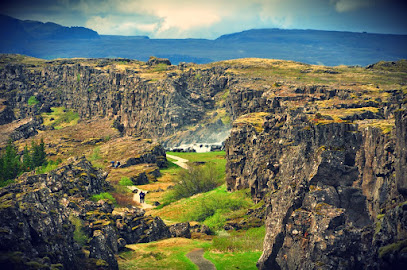
Perlan
Explore Perlan, Reykjavik's natural history museum, planetarium, and café, where nature, culture, and stunning views come together in perfect harmony.
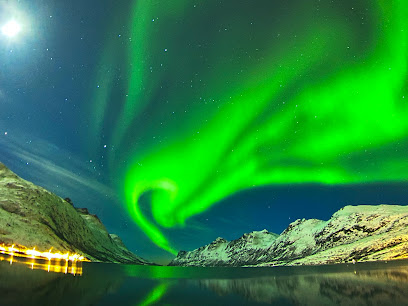
Sun Voyager
Discover the Sun Voyager, Reykjavik's iconic sculpture symbolizing exploration, hope, and the breathtaking beauty of Iceland's coastal landscape.
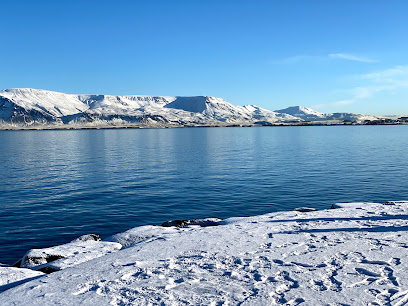
Vatnajökull National Park
Explore the breathtaking landscapes of Vatnajökull National Park, Iceland's largest national park, featuring glaciers, waterfalls, and unique wildlife.
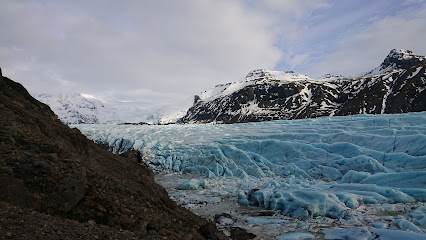
Fjaðrárgljúfur
Discover the breathtaking beauty of Fjaðrárgljúfur Canyon, a must-visit natural wonder in Iceland known for its stunning landscapes and serene hiking trails.

National Museum of Iceland
Explore Iceland's past at the National Museum, featuring Viking artifacts, rich history, and contemporary exhibitions in the heart of Reykjavik.
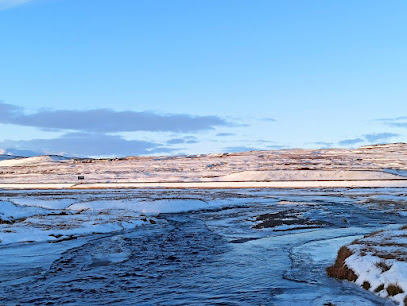
Hvitserkur
Discover the breathtaking Hvitserkur, a towering basalt rock formation in Iceland, surrounded by stunning coastal scenery and rich wildlife.
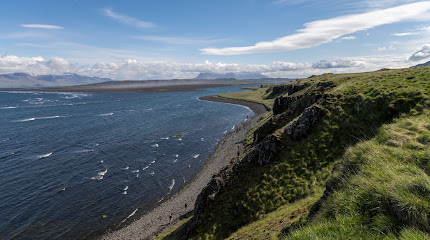
Reykjanesfólkvangur
Experience the breathtaking beauty of Reykjanesfólkvangur, a nature preserve filled with unique geological wonders and vibrant wildlife.
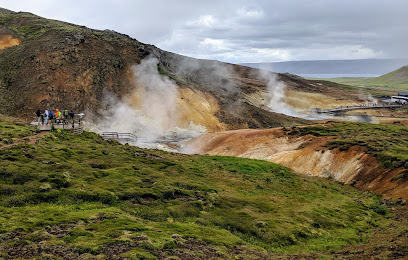
Kolugljúfur Canyon
Discover the breathtaking beauty of Kolugljúfur Canyon in Iceland, a stunning natural attraction perfect for hiking and nature photography.
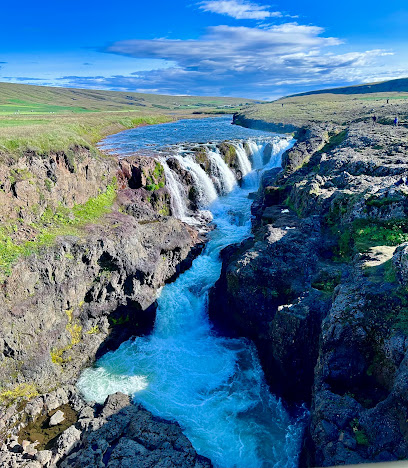
Skútustaðagígar
Explore Skútustaðagígar, Iceland's mesmerizing pseudocraters, offering stunning landscapes and rich birdlife in a serene natural setting.
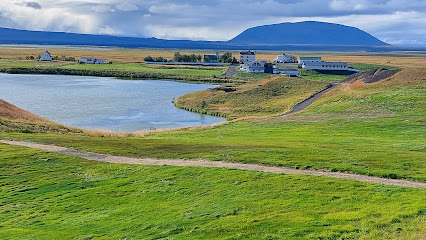
The Settlement Exhibition
Uncover the fascinating history of Iceland from the Viking Age to modern times at The Settlement Exhibition in Reykjavik.
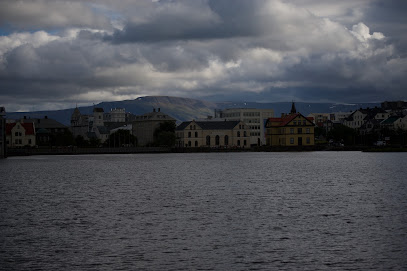
Árbær Open Air Museum
Discover Iceland's cultural heritage at Árbær Open Air Museum, where history comes alive through traditional buildings and engaging exhibits.
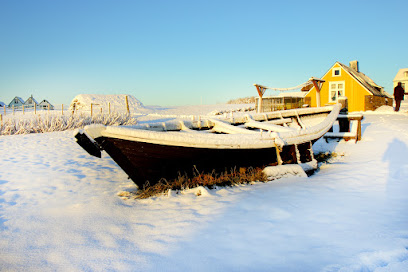
Museum of Icelandic Sorcery and Witchcraft
Explore the magical world of Icelandic sorcery and witchcraft at the Museum of Icelandic Sorcery and Witchcraft in Hólmavík.
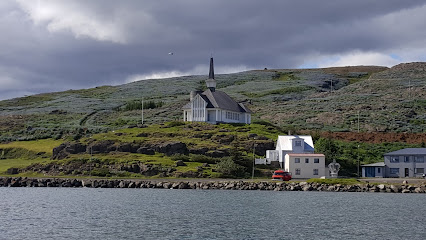
Þúfa
Discover Þúfa in Reykjavik - a picturesque mound blending nature's beauty with urban charm for a memorable Icelandic experience.
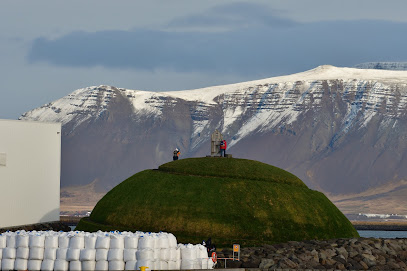
Unmissable attractions to see
Hvitserkur
Explore Hvitserkur, Iceland's iconic rock formation, where nature meets folklore in a breathtaking coastal setting.
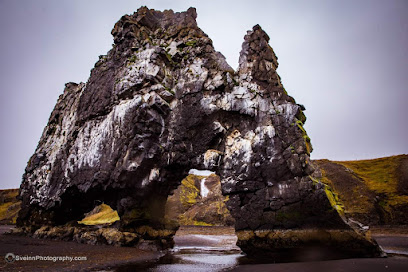
Garður Old Lighthouse
Explore the stunning Garður Old Lighthouse, a historic landmark offering breathtaking ocean views and a glimpse into Iceland's maritime heritage.
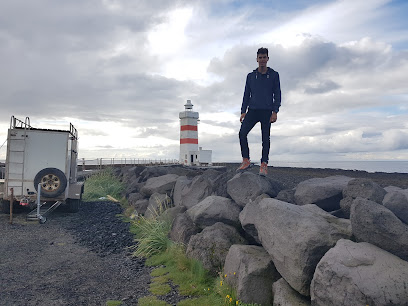
Forest Lagoon
Experience the rejuvenating thermal waters of Forest Lagoon in Akureyri, surrounded by stunning landscapes and natural serenity.
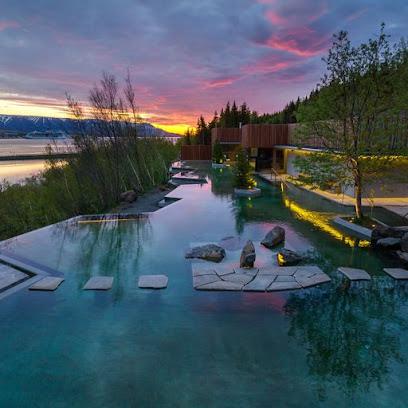
Museum of Icelandic Sorcery and Witchcraft
Discover the eerie enchantment of Icelandic folklore at the Museum of Icelandic Sorcery and Witchcraft, a captivating blend of history and magic.
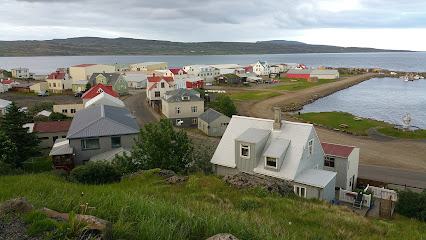
Thríhnúkagígur Volcano
Discover the stunning Thríhnúkagígur Volcano, an extraordinary geological wonder in Iceland, perfect for adventure seekers and nature lovers.
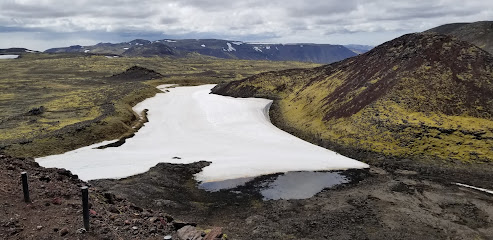
Geitafoss
Discover the enchanting beauty of Geitafoss, a breathtaking waterfall in North Iceland that promises unforgettable views and serene surroundings.

Eiríksstaðir - Viking Longhouse
Embark on a journey through time at Eiríksstaðir, the Viking Longhouse, where history and culture blend seamlessly in Iceland's stunning landscape.

North Restaurant
Savor the flavors of Iceland at North Restaurant in Akureyri, where fresh ingredients meet modern culinary artistry in a cozy setting.
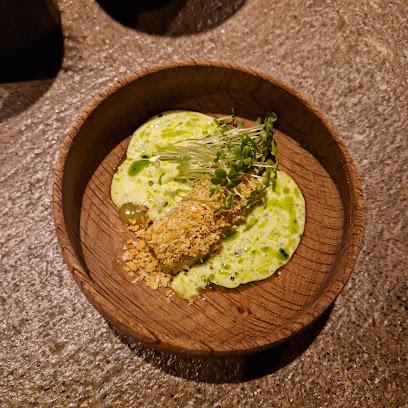
Grenjaðarstaður - the Old Turfhouse
Explore Grenjaðarstaður, the Old Turfhouse, a historic museum in Húsavík showcasing Iceland's rich cultural heritage and traditional architecture.
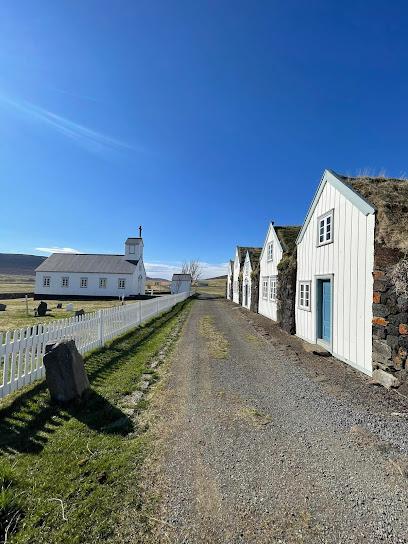
East Iceland Heritage Museum
Explore East Iceland's rich culture and history at the East Iceland Heritage Museum, a treasure trove of artifacts and exhibits waiting for your discovery.
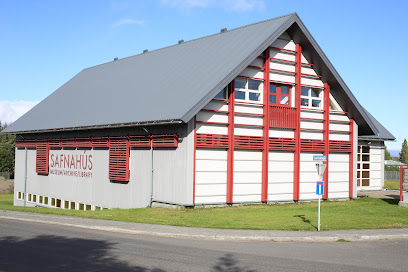
Ósland
Discover the breathtaking beauty of Ósland in Höfn, Iceland, a must-visit natural wonder for every traveler seeking tranquility and stunning landscapes.
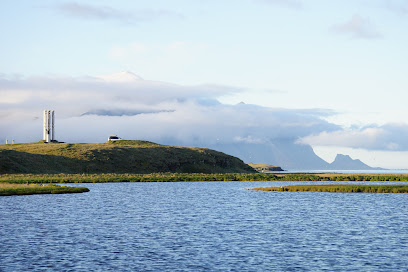
Lón
Experience the serene beauty of Lón, a hidden Icelandic gem offering breathtaking landscapes and tranquility amidst nature's wonders.
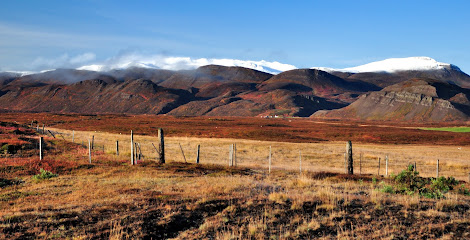
Skútustaðir
Explore the stunning landscapes and unique geological features of Skútustaðir, a tranquil oasis in the heart of Iceland's natural beauty.
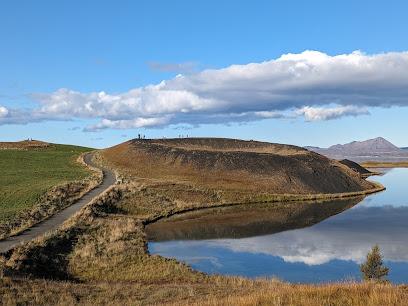
Essential places to dine
Friðheimar
Experience Icelandic cuisine like never before at Friðheimar's enchanting greenhouse restaurant featuring fresh tomatoes and local delicacies.
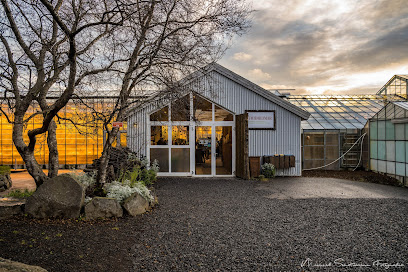
Grillmarkaðurinn
Discover the rich flavors of Icelandic cuisine at Grillmarkaðurinn in Reykjavík - where tradition meets modern culinary artistry.
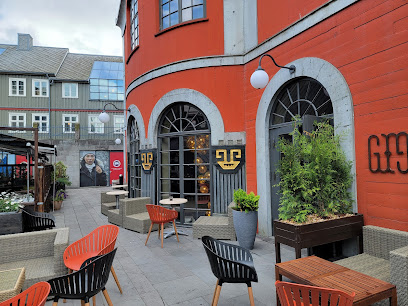
Restaurant Mika
Discover exquisite flavors at Restaurant Mika in Reykholt - from fresh seafood to artisanal chocolates.
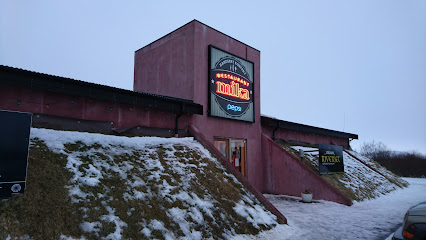
Black Beach Restaurant
Experience exceptional dining at Black Beach Restaurant near Reynisfjara with stunning ocean views and delicious Icelandic cuisine.
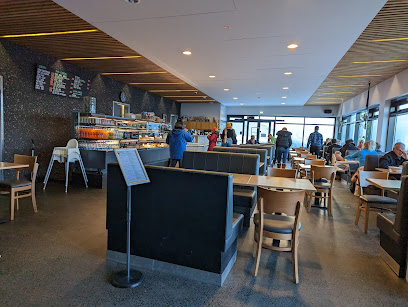
Kol Restaurant
Experience the best of Icelandic cuisine at Kol Restaurant in Reykjavík—where tradition meets innovation in every dish.
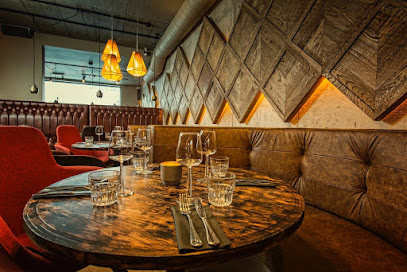
Geysir Glima restaurant
Experience authentic Icelandic cuisine amidst stunning geothermal landscapes at Geysir Glima restaurant.

Sjávarborg Restaurant
Discover Icelandic flavors at Sjávarborg Restaurant in Hvammstangi—where fresh seafood meets breathtaking ocean views.
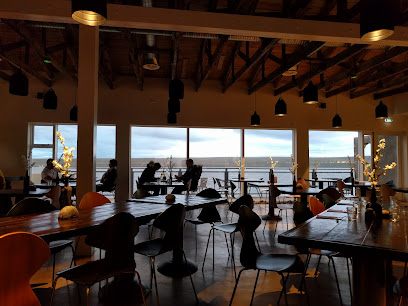
Foodcellar
Discover Icelandic flavors at Foodcellar in Reykjavík—where tradition meets innovation in every bite.
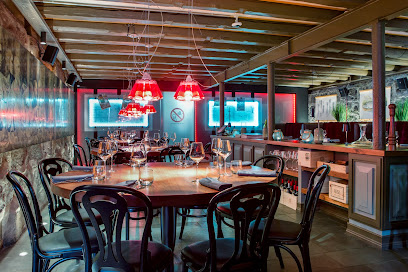
Bautinn Restaurant
Experience authentic Icelandic cuisine at Bautinn Restaurant in Akureyri – where every meal tells a story.
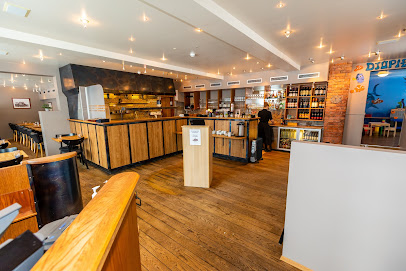
Gamla fjósið
Discover authentic Icelandic cuisine with stunning views at Gamla fjósið in Eyjafjöllum – where every meal is a celebration of local flavors.
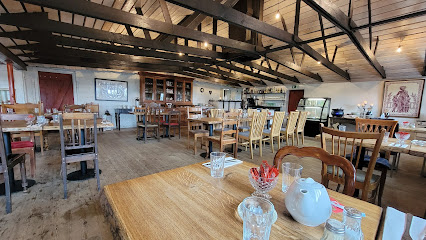
Strikið
Discover Strikið: A premier gastropub in Akureyri serving exquisite Scandinavian-inspired dishes with stunning views.
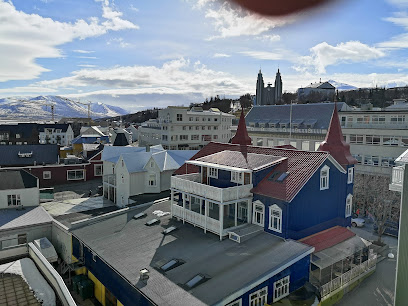
Lindin
Experience authentic Icelandic cuisine at Lindin Restaurant in Laugarvatn, where fresh ingredients meet stunning landscapes.
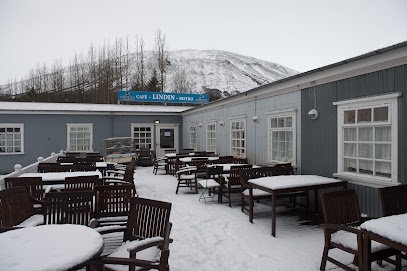
Greifinn
Discover the flavors of Iceland at Greifinn in Akureyri - where exquisite dining meets local charm.
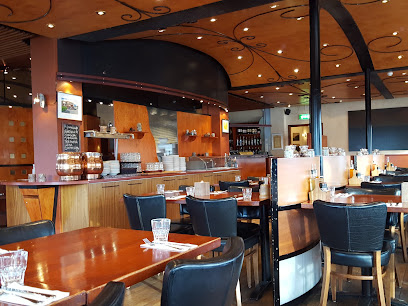
Café Riis Hólmavík - Restaurant - Pizzeria & Bar
Discover Café Riis Hólmavík – where delicious pizzas meet Icelandic hospitality in a cozy setting.
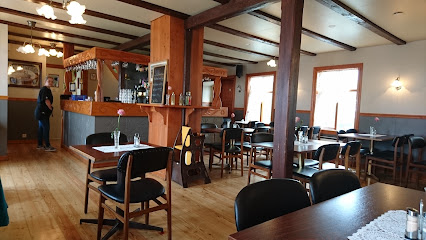
North West - Hotel & Restaurant
Discover North West - Hotel & Restaurant: A haven for food lovers and travelers in the heart of Iceland's stunning landscapes.
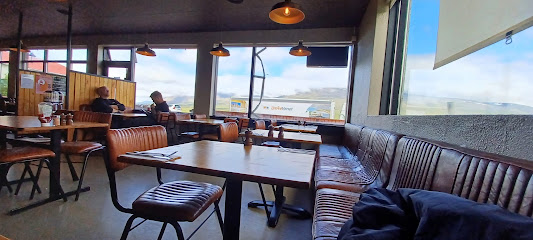
Markets, malls and hidden boutiques
Christmas House
Experience the magic of Christmas year-round at the enchanting Christmas House in Akureyri, Iceland, where festive charm meets unique gifts.
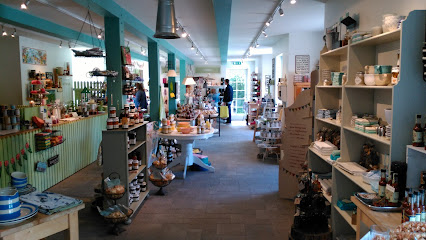
KIDKA Wool Factory Shop
Explore KIDKA Wool Factory Shop for authentic Icelandic wool products that embody the rich heritage and craftsmanship of Iceland.
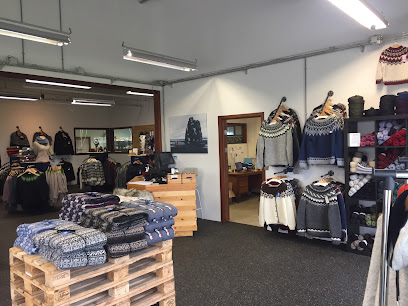
Polarbear Gift Store
Explore Polarbear Gift Store in Reykjavik for authentic Icelandic souvenirs and unique gifts that capture the spirit of Iceland.
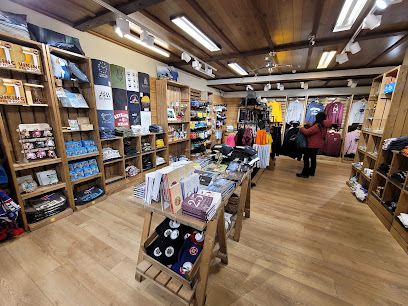
Flying Tiger Copenhagen
Explore the whimsical world of Flying Tiger Copenhagen in Reykjavík, where unique gifts and affordable treasures await every visitor.
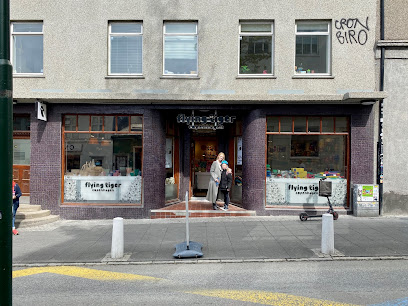
Nordic Store
Explore the Nordic Store in Reykjavík for exceptional Icelandic clothing, unique souvenirs, and high-quality yarn, embodying the spirit of Icelandic craftsmanship.
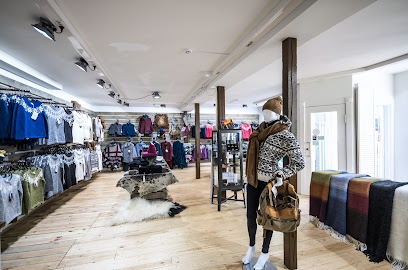
The VIKING
Explore The VIKING in Reykjavík for unique Icelandic souvenirs, clothing, and local insights for an unforgettable Icelandic experience.

Old Harbour Souvenirs
Explore Old Harbour Souvenirs for authentic Icelandic gifts, unique clothing, and warm knitwear in the heart of Reykjavík.
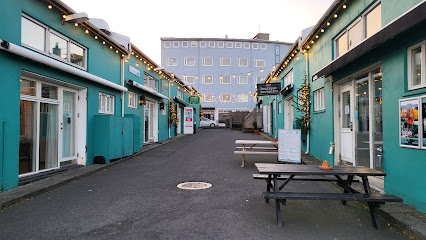
66°North
Discover high-quality outdoor clothing and gear at 66°North in Akureyri, where style meets functionality for all Icelandic adventures.
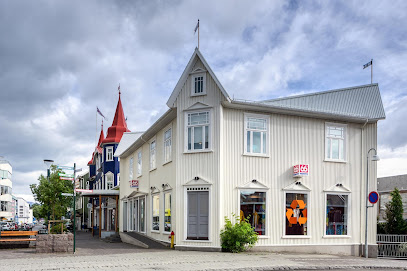
The Viking
Explore Iceland's unique culture and craftsmanship at The Viking, your go-to souvenir store and tourist information center in Reykjavík.
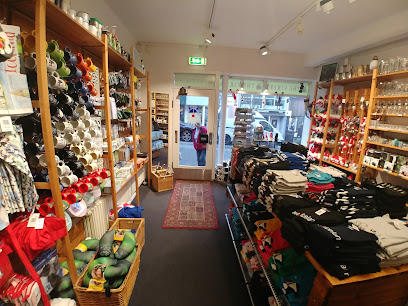
MJÚK Iceland ehf
Explore MJÚK Iceland, where unique craftsmanship meets the charm of Reykjavík, offering exceptional woolen goods and a taste of local culture.
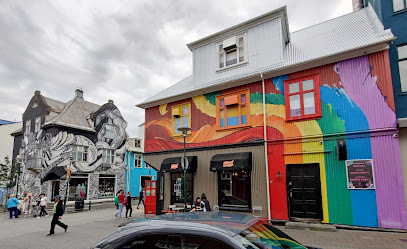
Thorvaldsens Bazar
Explore the unique offerings of Thorvaldsens Bazar, a boutique in Reykjavík showcasing exceptional Icelandic craftsmanship.
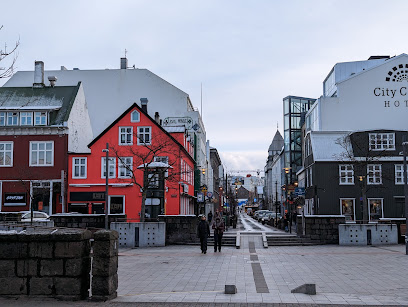
Shopicelandic
Discover unique handcrafted souvenirs and gifts that celebrate the essence of Iceland at Shopicelandic in Reykjavík.
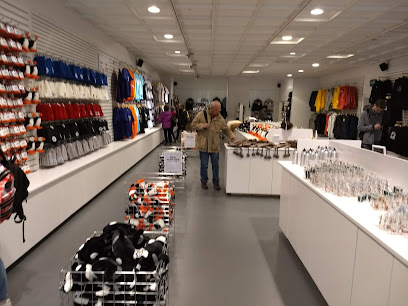
Islandia Bankastræti
Discover authentic Icelandic souvenirs and gifts at Islandia Bankastræti, the perfect spot for memorable keepsakes in Reykjavík.
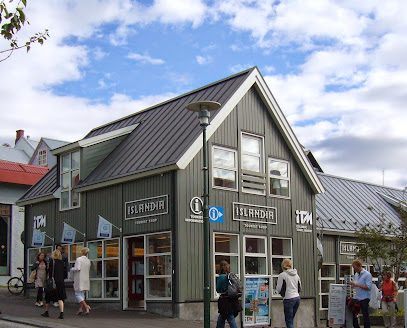
Rammagerdin
Explore Rammagerdin, Reykjavík's charming gift shop offering unique Icelandic souvenirs and artisan crafts for every traveler.
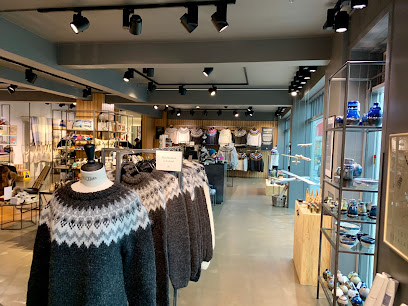
The Heart of Reykjavik
Explore Icelandic culture through unique crafts and souvenirs at The Heart of Reykjavik, your go-to gift shop in the vibrant capital.
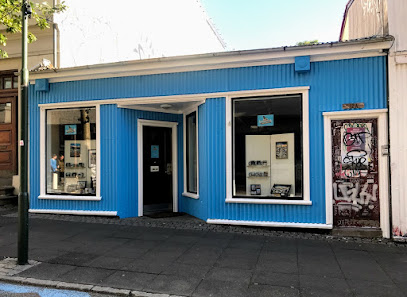
Essential bars & hidden hideouts
Lebowski Bar
Discover the Lebowski Bar in Reykjavík - a unique bar filled with movie nostalgia, delicious drinks, and a lively atmosphere that invites all to enjoy.
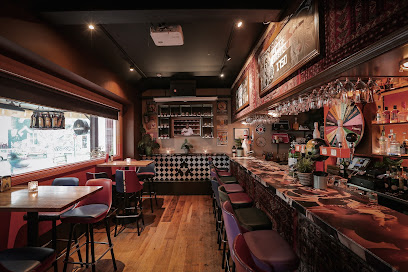
American Bar
Experience the vibrant flavors of American cuisine at Reykjavík's American Bar, where grilled delights and a lively atmosphere await every visitor.
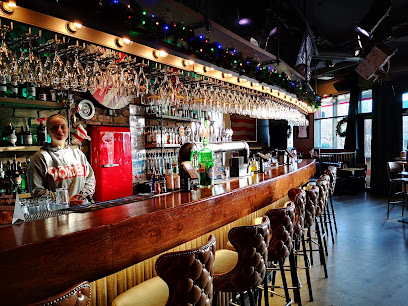
Dillon Whiskey Bar
Discover the lively Dillon Whiskey Bar in Reykjavík, where exceptional whiskeys meet unforgettable live music and karaoke nights, creating the perfect nightlife experience.
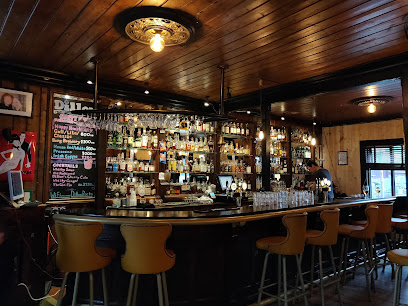
The English Pub
Discover the vibrant atmosphere of The English Pub in Reykjavik, where locals and tourists gather for drinks, music, and unforgettable experiences.
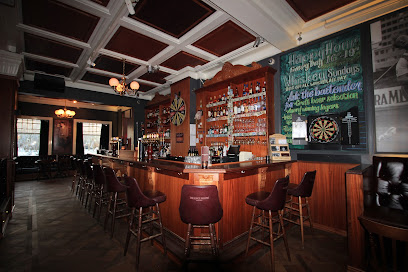
The Irishman Pub
Discover the authentic Irish experience at The Irishman Pub in Reykjavík, where warm hospitality, live music, and delicious food come together.
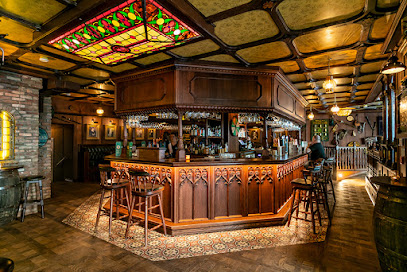
Frederiksen Ale House
Discover the charm of Frederiksen Ale House in Reykjavík, where craft beers and a warm atmosphere await every visitor.
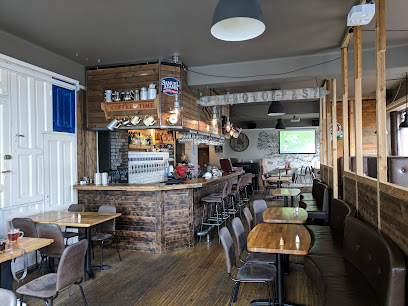
Bravó
Discover Bravó, Reykjavík's vibrant bar blending creative cocktails, live music, and an energetic atmosphere for unforgettable nights.
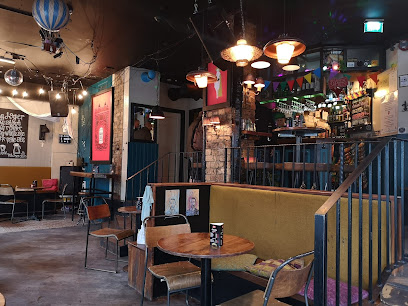
Microbar Reykjavík
Discover the vibrant spirit of Reykjavík at Microbar, where craft beers and warm hospitality await in the heart of Iceland's capital.
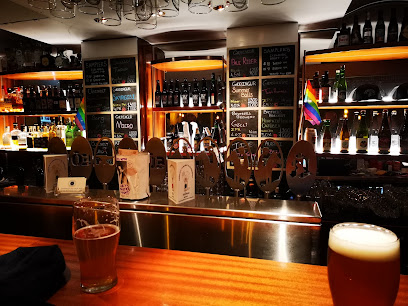
Kaffibarinn
Experience the vibrant nightlife of Reykjavík at Kaffibarinn, a cozy bar known for its friendly atmosphere, great drinks, and live music.
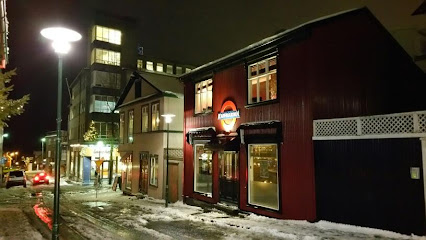
Skúli Craft bar
Discover the vibrant atmosphere and exceptional craft beer selection at Skúli Craft Bar, a must-visit in Reykjavik's lively bar scene.
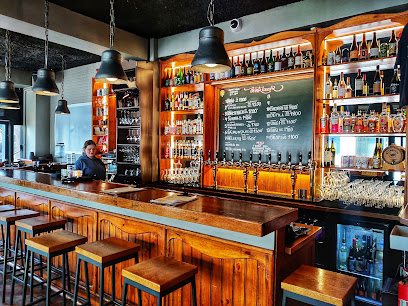
Einstök Bar
Discover the essence of Icelandic craft beer at Einstök Bar, a vibrant hotspot in Reykjavík's nightlife scene, perfect for locals and tourists alike.
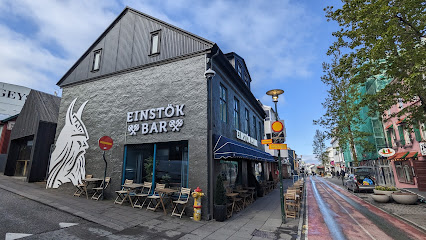
SKY Bar
Discover the SKY Bar: Reykjavík's ultimate rooftop escape with stunning views and exquisite cocktails in the heart of Iceland's vibrant capital.
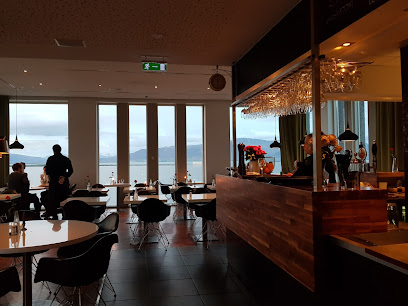
Icelandic Craft Bar
Discover the rich flavors of Icelandic craft beers in a cozy and inviting atmosphere at the Icelandic Craft Bar, a must-visit for every tourist.
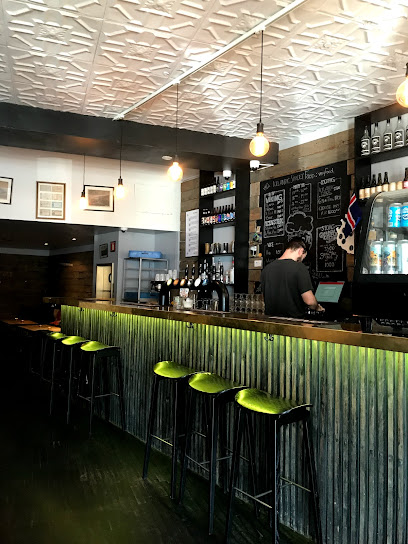
R5 Micro Bar
Experience the vibrant nightlife of Akureyri at R5 Micro Bar, a cozy spot for craft beers and cocktails in Iceland's charming second city.
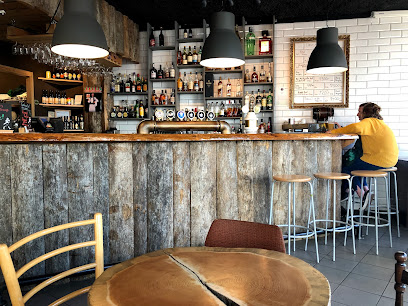
Ölstofa
Discover the heart of Reykjavík at Ölstofa, where local brews and vibrant ambiance create the perfect night out.
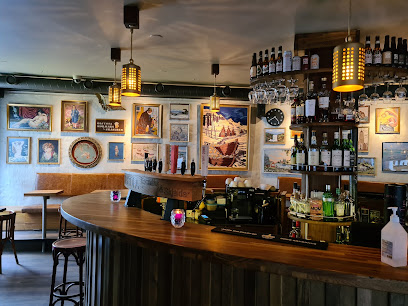
Local Phrases about North Iceland
-
- HelloHalló
[HAH-loh] - GoodbyeBless
[bless] - YesJá
[yow] - NoNei
[nay] - Please/You're welcomeGjörðu svo vel
[GYOHR-thu svoh vel] - Thank youTakk fyrir
[tahk feer-ir] - Excuse me/SorryAfsakið
[AHF-sah-kith] - How are you?Hvernig hefur þú það?
[KVER-nik heh-ur thoo thadh] - Fine. And you?Fínt. Og þú?
[feent oh thoo] - Do you speak English?Talarðu ensku?
[TAH-lahr-thoo en-skoo] - I don't understandÉg skil ekki
[yeh skil eh-ki]
- HelloHalló
-
- I'd like to see the menu, pleaseÉg ætla að sjá matsedilinn, væri það svo sniðugt
[yeh EYT-lah ath shau mat-seh-dil-in, VYEH-ri thahd svoh sni-thukt] - I don't eat meatÉg borða ekki kjöt
[yeh BOR-tha eh-ki chyot] - Cheers!Skál!
[skowl] - I would like to pay, pleaseMig langar að borga, væri það svo sniðugt
[mih lan-gahr ath bor-gah, VYEH-ri thahd svoh sni-thukt]
- I'd like to see the menu, pleaseÉg ætla að sjá matsedilinn, væri það svo sniðugt
-
- Help!Hjálp!
[khyawlp] - Go away!Farðu í burtu!
[FAHR-thu ee bur-thu] - Call the Police!Hringðu í lögregluna!
[hring-thu ee leu-gre-gluna] - Call a doctor!Hringðu í lækninn!
[hring-thu ee laik-nin] - I'm lostÉg er villtur
[yeh air vil-thur] - I'm illÉg er veikur
[yeh air vay-kur]
- Help!Hjálp!
-
- I'd like to buy...Ég ætla að kaupa...
[yeh EYT-lah ath koy-pa] - I'm just lookingÉg er bara að skoða
[yeh air bah-ra ath sko-tha] - How much is it?Hvað kostar það?
[kvath kohs-tahr thahd] - That's too expensiveÞað er of dýrt
[thahd air ohf deert] - Can you lower the price?Geturðu lækkað verðið?
[GYEH-tur-thoo ligh-kath vair-thith]
- I'd like to buy...Ég ætla að kaupa...
-
- What time is it?Hvað er klukkan?
[kvath air kluk-kahn] - It's one o'clockKlukkan er eitt
[kluk-kahn air eyt] - Half past (10)Hálf tíu
[howlf tee-oo] - MorningMorgunn
[mor-gunn] - AfternoonSíðdegis
[seed-deh-gis] - EveningKvöld
[kvolth] - YesterdayÍ gær
[eeg yair] - TodayÍ dag
[eeg dahg] - TomorrowÁ morgun
[ow mor-gun] - 1Eitt
[eyt] - 2Tvö
[tvuh] - 3Þrjú
[thryoo] - 4Fjögur
[fyur-gur] - 5Fimm
[fimm] - 6Sex
[sehx] - 7Sjö
[syaw] - 8Átta
[ow-tha] - 9Níu
[nee-oo] - 10Tíu
[tee-oo]
- What time is it?Hvað er klukkan?
-
- Where's a/the...?Hvar er...
[kvar air] - What's the address?Hvað er heimilisfangið?
[kvath air hame-ee-lis-fan-gith] - Can you show me (on the map)?Geturðu sýnt mér (á kortinu)?
[GYEH-tur-thoo seent mair (ow kawr-tin-oo)] - When's the next (bus)?Hvenær kemur næsta (strætisvagn)?
[KVER-nair keh-mur nyesta (strait-is-vagn)] - A ticket (to ....)Miða (til ....)
[mee-tha teel]
- Where's a/the...?Hvar er...
History of North Iceland
-
North Iceland's history dates back to the 9th century when Norse settlers first arrived. The region became one of the first areas of Iceland to be settled due to its fertile land and rich fishing grounds. Key archaeological sites, such as the remains of turf houses and ancient farmsteads, provide a glimpse into the life of these early settlers.
-
During the Icelandic Commonwealth period (930-1262), the North Icelandic region played a significant role in the island's governance. The Alþingi, Iceland's national assembly, was established in 930 AD, and several local assemblies, or 'þing,' were held in North Iceland. These gatherings were crucial for legal disputes, trade, and social gatherings.
-
North Iceland is home to several medieval turf churches, which are unique examples of early Icelandic architecture. These churches, such as the Víðimýrarkirkja in Skagafjörður, were constructed using local materials like turf and wood. They offer a fascinating insight into the religious and architectural history of the region.
-
The Saga Age (930-1030 AD) is a vital period in North Iceland's history, marked by the creation of the Icelandic Sagas. These epic tales, such as 'Grettis Saga' and 'Laxdæla Saga,' recount the lives and adventures of early Icelandic heroes. Many of the events and settings described in these sagas are located in North Iceland, making it a region steeped in literary history.
-
Húsavík, a small town in North Iceland, has a long history of whale hunting dating back to the 19th century. Although controversial by today's standards, whale hunting played a crucial role in the local economy and culture. Today, Húsavík is known as the 'Whale Watching Capital of Iceland,' and visitors can learn about the town's whaling history at the Húsavík Whale Museum.
-
The Cod Wars were a series of confrontations between Iceland and the United Kingdom over fishing rights in the North Atlantic, particularly affecting North Icelandic waters. These disputes, which occurred between the 1950s and 1970s, were crucial in establishing Iceland's exclusive fishing zone, significantly impacting the local fishing communities and economy.
-
Eyjafjörður, the longest fjord in Iceland, is a central feature of North Iceland. The town of Akureyri, located at the fjord's base, has been a significant trading post and cultural hub since the 18th century. Known as the 'Capital of North Iceland,' Akureyri boasts a rich history of commerce, education, and culture, with landmarks like the Akureyri Church and the Akureyri Art Museum.
North Iceland Essentials
-
North Iceland is accessible by air and road. The nearest international airport is Keflavík International Airport, situated about 400 kilometers southwest of the region. From Keflavík, you can take a domestic flight to Akureyri Airport, the main gateway to North Iceland. Alternatively, you can rent a car or take a bus from Reykjavík, the capital city, which is approximately a 5-hour drive to Akureyri. Scheduled bus services also connect Reykjavík with various towns in North Iceland.
-
Once in North Iceland, you can explore the region by rental car, bus, or taxi. Car rentals are available in Akureyri and other larger towns, offering the flexibility to explore remote areas at your own pace. Strætó, the national bus company, operates routes connecting major towns and attractions. For shorter distances within towns, taxis are convenient but can be more expensive. Cycling is also popular in the summer months, with bike rentals available in some locations.
-
The official currency of Iceland is the Icelandic Króna (ISK). Credit and debit cards are widely accepted in hotels, restaurants, and shops throughout North Iceland. However, it is advisable to carry some cash, especially when visiting rural areas or smaller establishments. ATMs are available in larger towns like Akureyri and Húsavík, but it is wise to withdraw sufficient cash before heading to more remote locations.
-
North Iceland is generally a very safe destination for tourists, with a low crime rate. However, it is always important to take standard precautions. Avoid leaving valuables in your car and be mindful of your belongings in crowded places. There are no specific high-crime areas targeting tourists, but always stay vigilant and aware of your surroundings, especially in unfamiliar areas.
-
In case of emergency, dial 112 for immediate assistance. This number connects you to the police, fire, and medical emergency services. Akureyri hosts the main hospital in North Iceland, while smaller towns have health clinics for minor issues. Pharmacies are available in most towns for over-the-counter medications. It is highly recommended to have travel insurance that covers medical emergencies and other unexpected events.
-
Fashion: Do dress in layers to adapt to changing weather conditions, and bring waterproof clothing. Avoid wearing revealing clothing in public spaces. Religion: Do respect local customs and traditions. When visiting churches, dress modestly and follow any specific guidelines. Public Transport: Do be respectful and quiet on public transport. Don't eat or drink on buses. Greetings: Do greet people with a friendly 'hello' or 'hæ'. A firm handshake is also common. Eating & Drinking: Do try local dishes such as lamb, fish, and skyr. Don't refuse food offered by locals, as it is considered impolite. Always say 'Takk' (thank you) when receiving food or drink.
-
To experience North Iceland like a local, visit the local swimming pools, which are a significant part of Icelandic culture. Engage with locals at community events and festivals, such as the Akureyri Winter Festival. Explore the lesser-known hiking trails and natural hot springs that locals frequent. Don't miss the chance to taste locally produced goods at farmers' markets and small cafes. The Northern Lights are a must-see; locals recommend viewing them from remote areas away from city lights for the best experience.
Trending Landmarks in North Iceland
Nearby Cities to North Iceland
-
Things To Do in Dalvik
-
Things To Do in Husavik
-
Things To Do in Saudarkrokur
-
Things To Do in Blonduos
-
Things To Do in Egilsstadir
-
Things To Do in Seydisfjordur
-
Things To Do in Borgarnes
-
Things To Do in Stykkisholmur
-
Things To Do in Isafjordur
-
Things To Do in Hveragerdi
-
Things To Do in Selfoss
-
Things To Do in Reykjavik
-
Things To Do in Kopavogur
-
Things To Do in Vik
-
Things To Do in Hafnarfjordur




